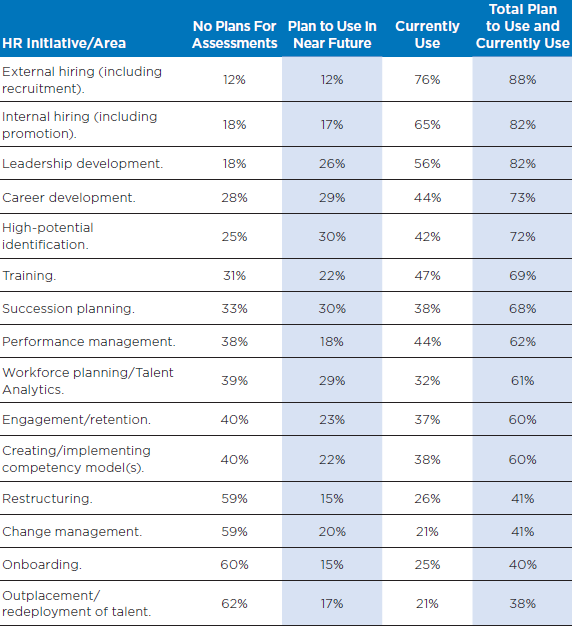HCI Blog
Archive from July 2014
Eight easy steps to reach a promotion
- Be the best you can in your current position – Before you go any further in your career path, you have to get work done in the position you currently find yourself in.
- Provide support to your leader– Other than executing the tasks which are naturally required by your function, make sure you also offer your boss a helping hand. This can go a long way, as you will be perceived as helpful and soliciting.
- Lead when possible – Try to assume the position of a leader when possible in any given situation, independent of its size or importance. With this, you will be able to display what you have in you in terms of leadership.
- Approach problems and issues others are unaware of – Every organization has needs nobody is paying attention to, or people are actively ignoring. When you take on a task that no one else is willing to do, you prove your potential and make yourself stand out.
- Show that you are a capable leader – Being a leader isn’t only imposing your will over others. You must be understanding and proactive! Show that you can lead others in the best way possible!
- Keep your ambitions to yourself – Share your ambitions only with those whom you can completely trust. Keep a close grip of how you execute your current work but at the same time keep a foresight on what you want to reach.
- Find role models – Learn from others’ successes and failures. Find individuals who have the roles you want and learn from them. Identify behaviors you can emulate while being true to yourself, but don’t forget to look at those who are stuck in their career as a lesson of what not to do.
- Relationships and networking – Networking is essential in any business sphere. Make sure you meet and greet as well as become well known within your company and among your external work circles.
BASED ON: TLNT
Human Resources priorities according to economic models
Different economic models translate to different HR priorities.
Emerging economies tend to focus on obtaining more immediate results when compared to established economies, which focus on sustaining a more solid long term corporate development model.
See the graph below which enumerates HR priorities according to a countries economic development level.
SOURCE: 2014 Global Assessment Trends Report
Six tips on how leaders should deal with ethics in the workplace
As previously talked about on our blog, ethics is something that must permeate entirely through a company, meaning that leaders must be a starting point as to setting a positive example too all those under their chain of leadership.
Overall, the difference that can be made when ethical leadership is put into practice can be astounding!
Here are six tips on how to exercise ethical leadership in practice:
- Analyze all the factors involved in making ethical decision: Know and admit that taking an ethical decision may not be as simples as it sounds. Make sure that all of the players involved participate and discuss openly all the possible scenarios and outcomes of making a certain decision.
- Make ethics and everyday business dealings go hand in hand: Ethics must be a modus operandi! It must be incorporated into everyday habits and practices, rather than looking pretty on paper.
- Make respect part of the company culture: Respect must become part of a value which is held highly in your company. Respecting others boundaries and opinions is required to have a respectful environment.
- Ethics must be practiced by all, no exceptions: Allow no excuses. Make sure that no one is exempted from meeting the ethical standards that are adopted. Make everyone accountable for their ethical (or unethical) behavior.
- Reward ethical behavior: Leaders must recognize positive ethical behavior. Other than simply exemplifying what would be a positive ethical behavior, when a positive behavior is displayed it must be recognized.
- Expose ethics as a long term journey: Ethics is a long path which must be trailed for as long as someone is part of a company. Leaders must make it seem that ethics is a path which is followed on constantly and it is the leader’s role to put those who deviated from the path of ethics back on track.
BASED ON: Business News Daily
Eight questions to ask yourself about your last hiring mistake
Employees with a poor performance can be the result of a bad decision taken during his hiring process.
This means that future hiring processes must be more elaborate and have better screening tools, such as psychometric tests.
Here are eight questions you should ask yourself when you notice that a hiring has gone wrong:
- What reason is attributed to this person which makes her unsatisfactory?
- Did you check for attitude issues during the hiring process?
- Has your hiring process been able to identify their skills and abilities?
- Was the person hired informed of the details of their position?
- Could any measure have been taken to help the person feel part of the company such as coaching or and onboarding program?
- Does the employee have all the necessary tools and information to properly execute their function?
- Are the employee’s co-workers supportive? If not, why not?
- Is the employee’s manager or supervisor well-trained in how best to mentor new hires?
BASED ON: TLNT






